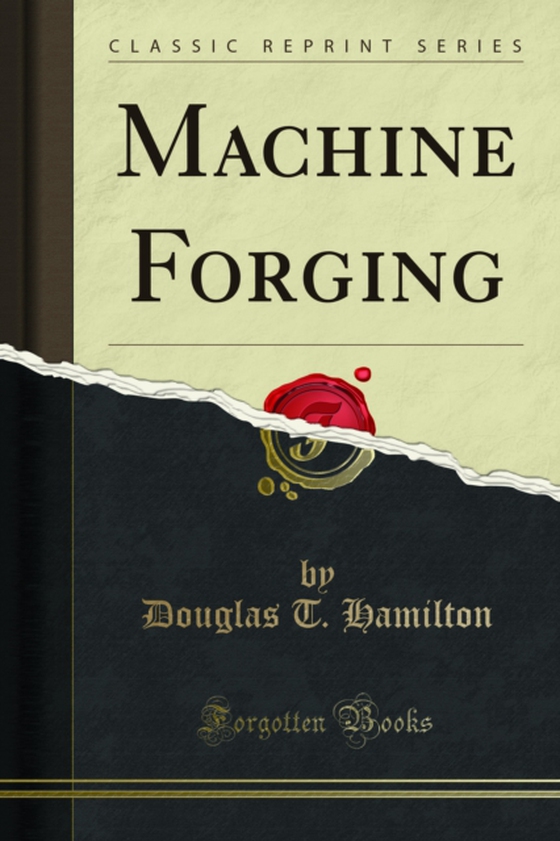
Machine Forging e-bog
59,77 DKK
(inkl. moms 74,71 DKK)
Whilst the greatest effort has been made to ensure the quality of this text, due to the historical nature of this content, in some rare cases there may be minor issues with legibility. The upsetting and forging machine might be considered to a certain extent as a further development of the bolt and rivet making machine, which was originated almost a century ago; but forging machines are built m...
E-bog
59,77 DKK
Forlag
Forgotten Books
Udgivet
27 november 2019
Genrer
TDM
Sprog
English
Format
pdf
Beskyttelse
LCP
ISBN
9780243693023
Whilst the greatest effort has been made to ensure the quality of this text, due to the historical nature of this content, in some rare cases there may be minor issues with legibility. The upsetting and forging machine might be considered to a certain extent as a further development of the bolt and rivet making machine, which was originated almost a century ago; but forging machines are built much heavier than bolt and rivet machines and are designed especially to meet the demands in the production of difficult-shaped and heavy forgings. For the heavier types of machines, the base or main frame, as a rule, is made from one solid steel casting. A typical upsetting and forging machine designed for heavy service is shown in Fig. 1. The bed of this machine is made from one solid casting of semi-steel. In order to provide against breakage caused by accidentally placing work between the dies, upsetting and forging ma chines are usually furnished with various safety devices to prevent serious damage to the machine. The safety device in this machine consists of a toggle-joint mechanism for operating the movable grip ping-die slide. The gripping die slide A, Fig. 1, is operated by two cams B and C' on the main crankshaft D. Cam B serves to close the dies which grip the work; cam C operates the opening mechanism for the dies. These cams are in contact with chilled cast-iron rolls E and F carried in the toggle slide G. The automatic grip relief is controlled by the by-pass toggle H and heavy coil spring I. This toggle does not come into play until the strain is such that it would cause damage to the working mechanism of the machine, or in other words until the maximum power required to hold the movable die from springing away,' is attained. The relief resets automatically on the back stroke of the machine, thus making a second blow possible without delay.
 Dansk
Dansk

